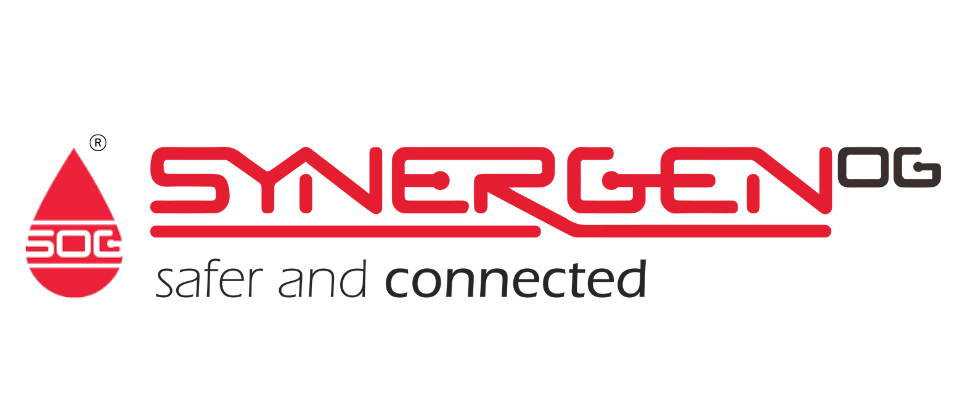| Summary: Imagine a world where we can stop harmful carbon emissions before they ever reach the atmosphere. That’s the promise of Carbon Capture, Utilization, and Storage (CCUS). In this blog, we explore how CCUS technology works, highlight real-world projects already making a difference, and look ahead to its growing role in the global push for net-zero emissions. As climate challenges intensify, CCUS could become one of our most important tools for a cleaner, more sustainable future. |
The world emits billions of tons of carbon dioxide every year, from cars, power stations, factories, and so on. The gas rises and envelops the planet like an extra blanket, making it warmer everywhere. Reducing emissions is part of the solution, but it doesn’t solve the whole problem. That’s where carbon capture, utilization, and storage (CCUS) come in.
What is Carbon Capture, Utilization, and Storage (CCUS)
Carbon Capture, Utilization, and Storage (CCUS) is a technology designed to prevent carbon dioxide (CO₂) emissions from reaching the atmosphere, where they contribute significantly to global warming. CCUS involves capturing CO₂ from industrial sources, using it commercially, or storing it underground permanently.
Industries with Highest CO₂ Emissions (Key Focus for CCUS):
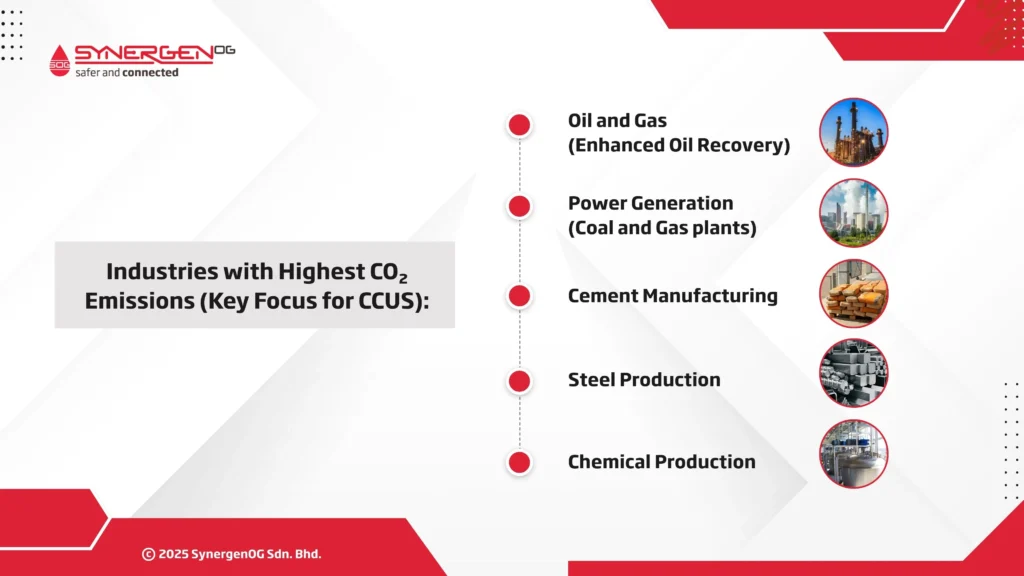
- Oil and Gas (Enhanced Oil Recovery)
- Power Generation (Coal and Gas plants)
- Cement Manufacturing
- Steel Production
- Chemical Production
These sectors generate significant and hard-to-abate CO₂ emissions, making them primary targets for CCUS solutions.
Why do Industries have to go for Carbon Capture
Companies don’t just capture carbon for the sake of it. They do it because:
- Regulations demand lower emissions
- Investors want greener business practices
- Some captured carbon can be turned into fuel, plastics, or building materials
How CCUS Works
The CCUS process typically involves three key stages: capture, utilization, and storage.
1. Capture (Collecting Carbon at the Source)
CCUS systems capture CO₂ directly from industrial emissions before they enter the atmosphere.
Major Carbon Capture Technologies are:
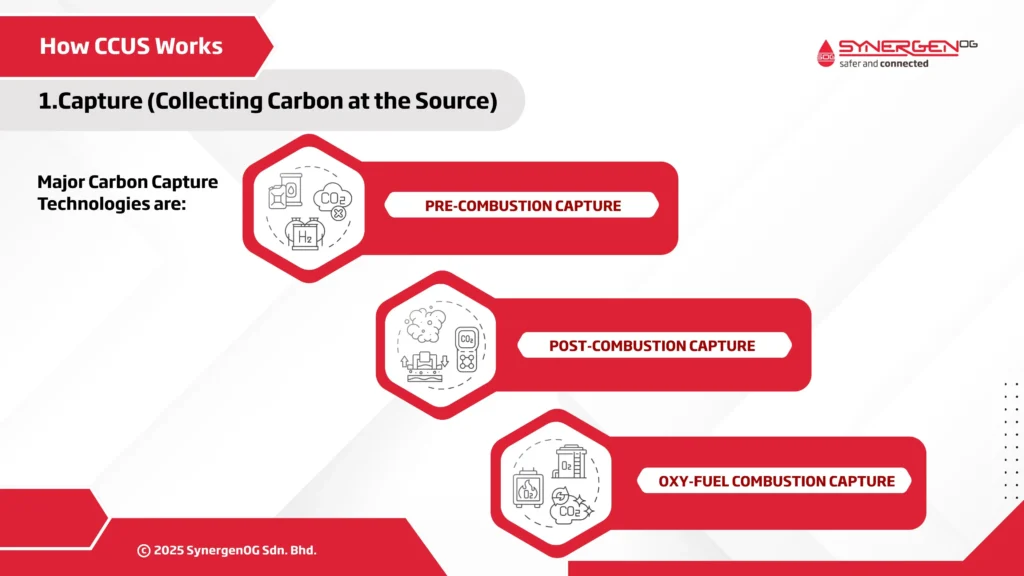
- Pre-Combustion Capture: Carbon is removed from fuels before combustion, common in hydrogen production and coal gasification.
- Post-Combustion Capture: CO₂ is scrubbed from flue gases after fuel combustion, primarily used in coal-fired power plants.
- Oxy-Fuel Combustion Capture: Fuels are burned with pure oxygen, producing concentrated CO₂ emissions for easy capture.
Common capture systems include:
- Chemical solvents absorbing CO₂
- Solid sorbents extracting CO₂ from gas streams
- Membrane systems filtering CO₂
2. Utilization (Putting Captured Carbon to Use)
Captured CO₂ can be utilized commercially in various ways, including:
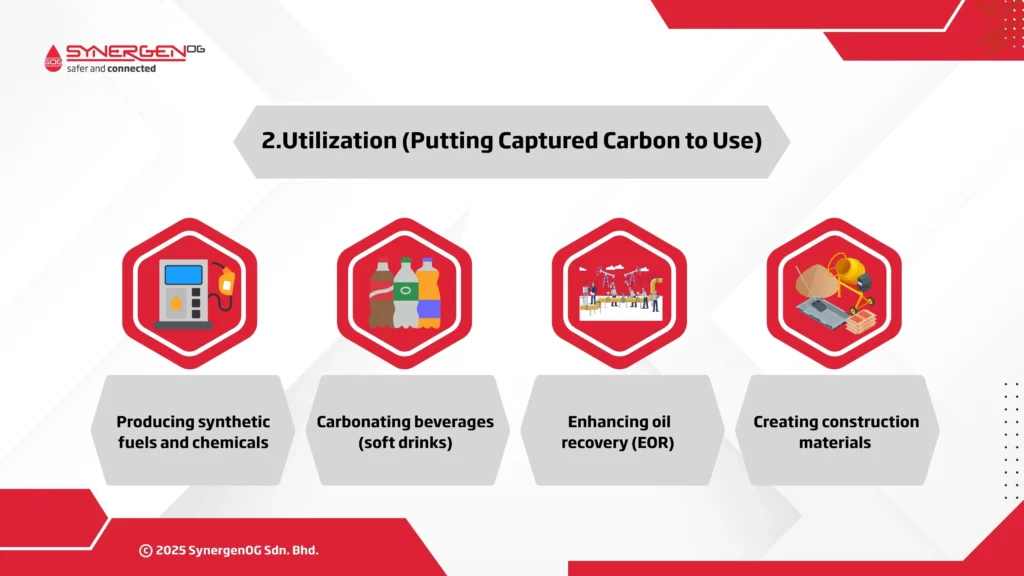
- Producing synthetic fuels and chemicals
- Carbonating beverages (soft drinks)
- Enhancing oil recovery (EOR) by injecting CO₂ into oil fields to extract residual oil
- Creating construction materials such as enhanced-strength concrete
Utilization converts CO₂ from a waste product to a valuable resource, providing additional economic incentives.
3. Storage or Carbon Sequestration (Safely Locking Carbon Underground)
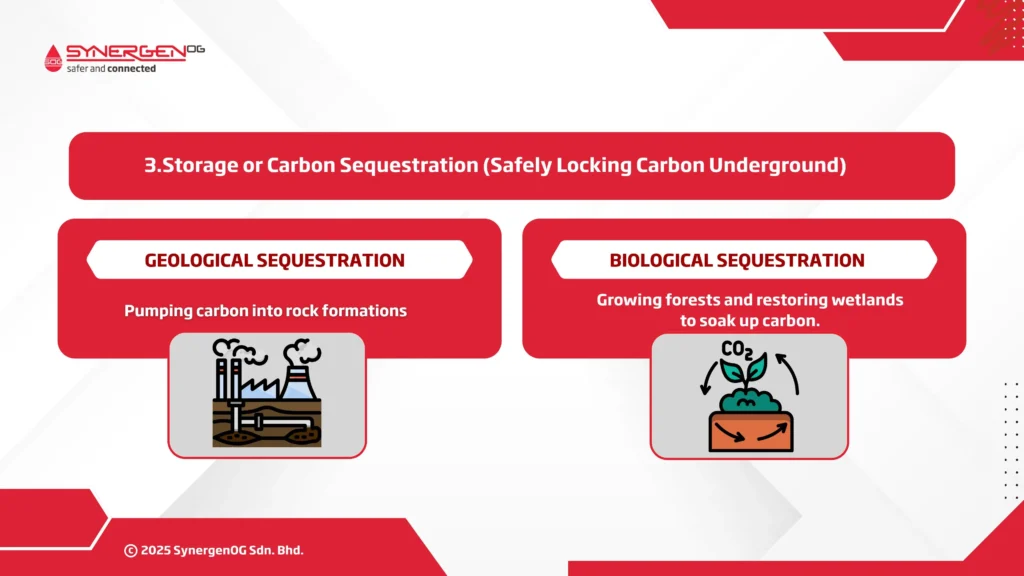
A deep storage facility is the best place to store carbon that cannot be reused. Scientists pick underground sites carefully to make sure the CO₂ stays sealed away permanently.
Sequestration happens when captured carbon is placed underground, or naturally locked in plants, soils, and oceans.
There are two main types of sequestration:
- Geological sequestration: Pumping carbon into rock formations
- Biological sequestration: Growing forests and restoring wetlands to soak up carbon.
Both methods help remove carbon from the cycle for hundreds to thousands of years.
Geological Storage Sites for CO₂
Good geological storage sites:
- Have thick, porous rock layers
- Sit under solid, leak-proof caprock
- Stay stable over millions of years
Biological Carbon Sequestration Methods
Nature has her own ways to trap carbon:
- Forests: Trees suck carbon dioxide during photosynthesis
- Soil Management: Farming techniques store carbon in the soil
- Ocean Algae: Tiny plants absorb carbon in massive amounts
Scientists are working on ways to boost these natural systems to help with climate goals.
History and Global Statistics of CCS/CCUS Projects
Early Pioneers in CCUS
- Sleipner Project (Norway): Initiated by Statoil (now Equinor) in 1996, this was the world’s first commercial-scale CCS project, storing CO₂ captured from natural gas extraction.
- Quest CCS Facility (Canada): Shell’s Quest project stores over one million tons of CO₂ every year from oil sands operations.
- Petra Nova (Texas, USA): Captured emissions from a coal plant and used the CO₂ to push more oil out of old wells.
Global Statistics
Currently, around 35 large-scale CCUS projects operate worldwide, with hundreds more in various planning and construction phases. These facilities cumulatively capture millions of tons of CO₂ annually, significantly contributing to emissions reduction efforts globally.
Challenges Facing Carbon Capture Utilization and Storage
Even though CCUS sounds like a golden ticket, it’s not a simple ride. Several obstacles slow down its growth.
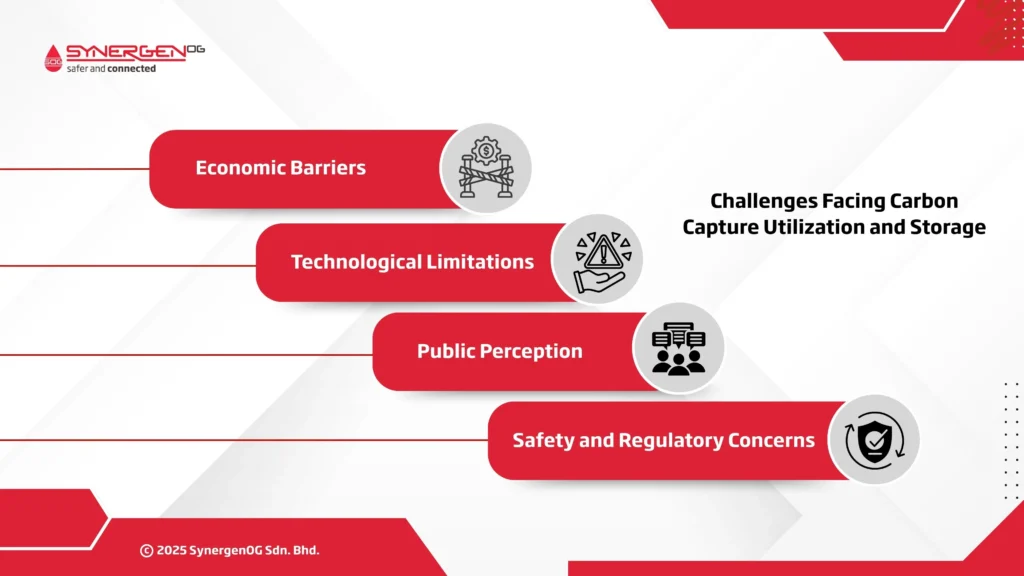
1. Economic Barriers
Setting up a carbon capture system costs a lot of money. Companies need to invest in:
- Expensive capture machines
- Compression and transport systems
- Storage site development
The cost of capturing one ton of carbon dioxide today can run between $8–$250 depending on the technology, industry and scale, while the costs for direct air CCS ranged between $100-345. Without strong government incentives, many companies hesitate to spend that much. Building the right infrastructure—like pipelines to move CO₂ to storage sites—also adds massive upfront costs.
Bottom line: Without financial help or strong carbon pricing, CCUS adoption stays slow.
2. Technological Limitations
CCUS technology has come a long way, but it’s still not perfect.
- Some methods only capture part of the carbon
- Others use a ton of energy, making the overall process less efficient
- Materials used for capture can degrade over time and need replacement
Research teams are pushing for better solvents, membranes, and capture materials. New designs could lower costs and energy use, making CCUS more attractive to industries.
3. Public Perception
Many communities worry about what happens if underground CO₂ leaks back to the surface. Even though well-designed storage sites are considered safe, public fear can stop projects before they start.
Example:
Several carbon storage projects faced protests in the U.S. and Europe because people feared groundwater contamination or earthquakes.
4. Safety and Regulatory Concerns
Scaling CCUS brings increased process safety challenges:
- Risks of CO₂ leakage causing environmental or health impacts.
- Public concerns around induced seismicity (earthquakes) or groundwater contamination.
- Regulatory complexities due to varying international standards.
Effective risk management, including rigorous process safety assessments and regular monitoring, is essential. As CCUS adoption scales, specialized safety services and process management protocols become increasingly crucial to ensure operational safety and regulatory compliance.
The Future of Carbon Capture: Trends and Innovations
The next few years could make or break the future of CCUS. Here’s what’s happening now and what’s coming next.
Emerging Carbon Capture Companies to Watch
New players are jumping into the CCUS game, offering fresh ideas:
- Carbon Clean: Focuses on affordable modular capture units for industries like cement and steel.
- Climeworks: Specializes in direct air capture, pulling carbon straight from the sky.
- Svante: Developing capture systems that use solid filters instead of liquid solvents.
These companies aim to make carbon capture cheaper, faster, and easier to scale.
Breakthrough Technologies on the Horizon
Research teams are pushing beyond traditional methods. Some exciting innovations include:
- Electrochemical capture: Using electricity to pull carbon out of gas streams more efficiently.
- Direct air capture (DAC): Removing carbon dioxide from ambient air, not just smokestacks.
- Mineralization: Reacting carbon dioxide with rocks like basalt to form solid minerals—turning gas into stone.
If these breakthroughs scale up, carbon capture could shift from a niche tool to a global climate solution.
Conclusion: The Role of Carbon Capture in a Net-Zero Future
Carbon capture utilization and storage isn’t some science fiction dream—it’s already part of the climate action playbook. While CCUS won’t solve climate change alone, it plays a vital support role by cutting emissions from industries that can’t easily switch to renewables.
The world needs a mix of solutions to meet net-zero goals. Renewables, energy efficiency, nature-based carbon removal—and yes, carbon capture—must all work together.
With new technologies on the rise, better funding models, and growing pressure for climate action, CCUS has the chance to move from a niche idea to a mainstream tool by the end of this decade.
Safety Studies for CCS/CCUS Facilities | A Must-have for Safe Operations | Learn More